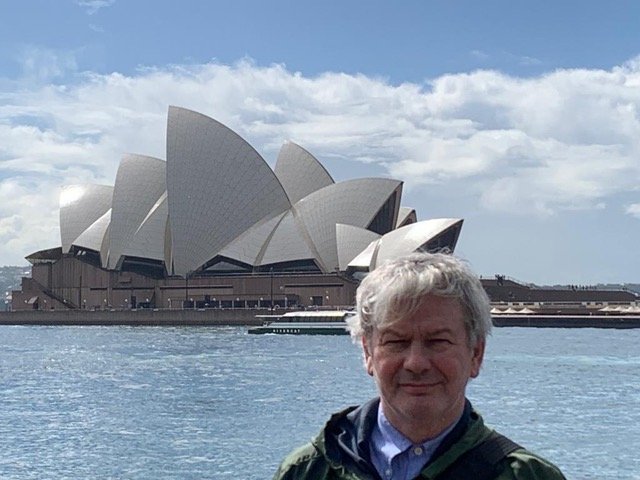‘Why Are All These People Here?’: A Provocative Question at the Sydney Opera House
I have recently returned from my first trip to Australia.
My brother Martin and I thoroughly enjoyed the sea and sunshine; walks and views; fresh food and robust wine. We visited museums, galleries and surf clubs; vibrant markets, friendly pubs and the hallowed MCG. We spotted wallabies, kookaburras and brush turkeys; drank piccolo coffees, sipped Coopers from schooners and paid at the bar. It struck me as a country of progress and positivity; optimism and opportunity.
On one occasion we were standing outside the Sydney Opera House, admiring its splendid ceramic-tiled shells. How magnificent to see this familiar building up close.
An Indian tourist approached and asked to have his picture taken. Once we had obliged, the young man had another request.
‘Can I ask you a question?’
‘Of course. What is it?’
‘I’d like to know: Why are all these people here?’
‘What do you mean? Why are these people in Sydney?’
‘No. This place, here.’ He gesticulated at the clusters of sightseers wandering around the building’s forecourt. ‘I asked the Security Guard and he doesn’t know.’
We hesitated for a moment.
‘Well, this is the Sydney Opera House. It’s an architectural masterpiece. It’s one of the wonders of the modern world.’
‘Oh. Thank you. I see.’
The tourist nodded gratefully at our explanation, though he still seemed a little perplexed.
'I think, at a child's birth, if a mother could ask a fairy godmother to endow it with the most useful gift, that gift should be curiosity.’
Eleanor Roosevelt
We spend a good deal of time nowadays describing in great detail the trends and fashions that are impacting our world. We have reams of data, stacks of statistics to prove our points and evidence our observations. But I wonder if we spend enough time endeavouring to comprehend the underlying forces driving change, the truest cause. Do we sufficiently stop to enquire: ‘Why are all these people here?’?
We know from the relentless enquiries of children that Why? can be challenging and disarming. It is a simple question, but it takes us to the most interesting places – particularly when it is repeated.
The Toyota Motor Corporation used to ask Five Whys of a technical fault in order to establish its root cause. They believed that only after Five Whys did one arrive at the real issue, and by this method they found that product problems often derive from people and processes.
'The basis of Toyota’s scientific approach is to ask why five times whenever we find a problem … By repeating why five times, the nature of the problem as well as its solution becomes clear.'
Taiichi Ohno
We stood talking to the Indian tourist for a little while longer. It transpired he was over on holiday from New Delhi. Not far from Agra and the Taj Mahal, we thought. Perhaps that’s why he seemed so unimpressed.
'How many times do I have to try to tell you
That I'm sorry for the things I've done?
But when I start to try to tell you,
That's when you have to tell me
Hey... This kind of trouble's only just begun.
I told myself too many times:
Why don't you ever learn to keep your big mouth shut?
That's why it hurts so bad to hear the words
That keep on falling from your mouth.
Tell me
Why...
I may be mad,
I may be blind,
I may be viciously unkind.
But I can still read what you're thinking.’
Annie Lennox, ‘Why'
No. 418
